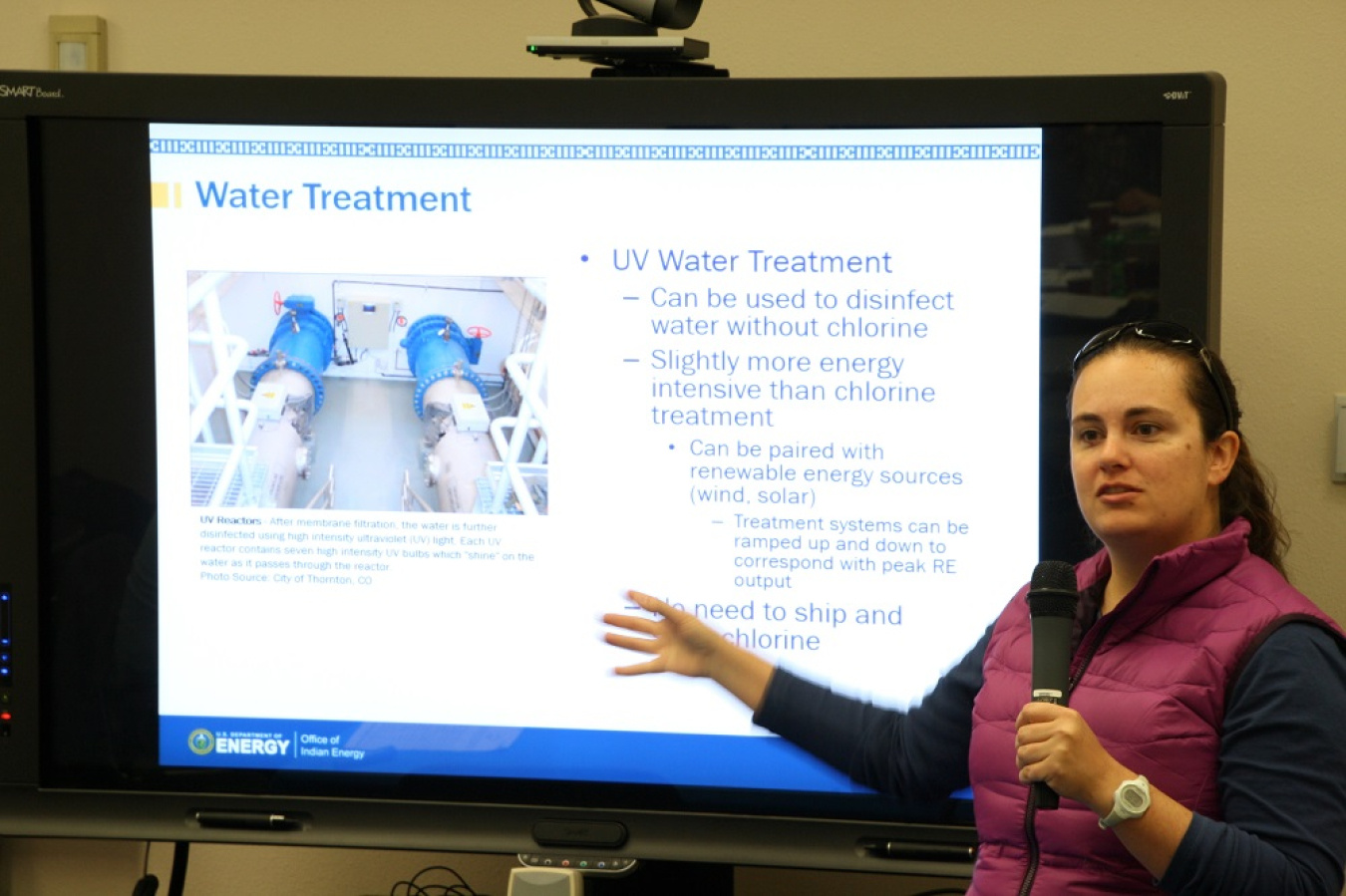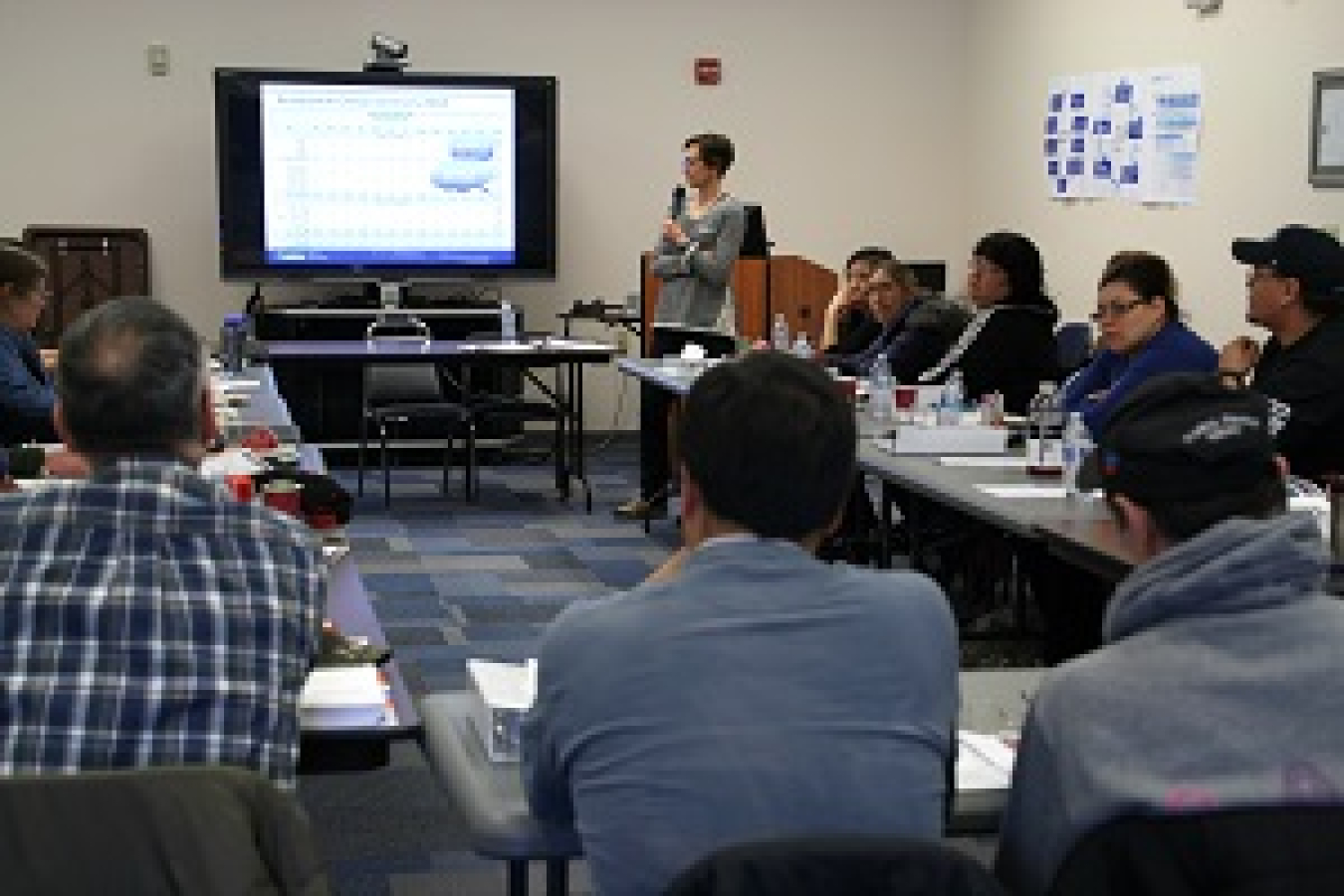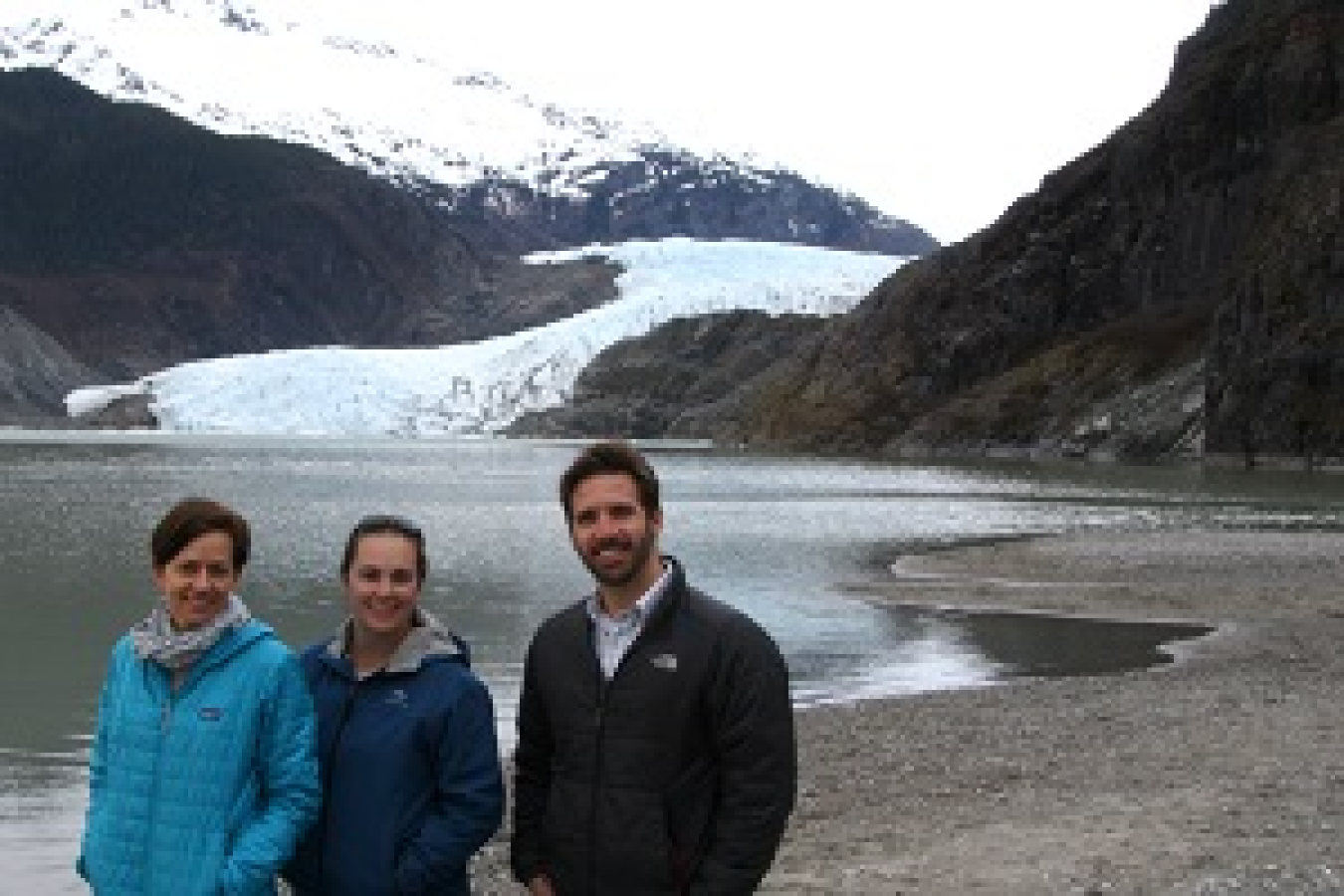
Sherry Stout presents at the Native Village Renewable Energy Project Development workshop in Dillingham, Alaska. Photo by Sherry Stout, NREL.
Recently, I had the opportunity to travel to Alaska to present a series of Native Village Renewable Energy Project Development workshops hosted by the U.S. Department of Energy (DOE) Office of Indian Energy and led by Alaska Program Manager Givey Kochanowski. I and three of my colleagues from DOE’s National Renewable Energy Laboratory (NREL) helped facilitate the workshops, which focused on teaching Alaska Natives how to develop renewable energy projects and implement energy efficiency technologies to help address rising energy costs, mitigate the impacts of climate change, and reduce reliance on imported fuel. We were fortunate to have additional presenters from the Alaska Energy Authority, the Alaska Native Tribal Health Consortium, and several regional organizations and Native corporations join us.

It was a whirlwind trip that took us from Bethel to Dillingham to Juneau in a little over a week. Our role was to guide participants through strategic energy planning and a five-step process for developing renewable energy projects on tribal lands using a new educational curriculum tailored specifically to Alaska.
The three regions represented in this round of workshops varied greatly—each with its own set of opportunities and challenges for developing renewable energy. The workshop in Bethel was held at the Yupiit Piciryarait Cultural Center and attended by 91 people—an all-time workshop high! Much of the technology interest centered around solar and wind applications and how to integrate those systems onto isolated grids. The attendees also expressed interest in energy efficiency measures. To facilitate better understanding of these measures, NREL partnered with local groups to provide a tour of homes designed by the Cold Climate Housing Research Center and a hands-on demonstration of a building energy audit.
A highlight for me in Bethel was visiting their wastewater treatment lagoons—some of the largest in the United States! We had a chance to look at the lagoons and help the operators brainstorm ways to save energy and incorporate renewable energy systems into Bethel’s wastewater treatment solution.
The next stop was the University of Alaska Fairbanks Bristol Bay Campus for the Dillingham workshop. Attendees there were interested in the water-energy nexus, particularly how water systems could be paired with renewable energy technologies. We also talked quite a bit about solar energy, an option not many in the region had explored before. Paul Schwabe, a senior financial analyst from NREL, also answered a lot of questions about renewable energy financing options that could work in the Alaskan context.
While in Dillingham, we had the opportunity to go on several local tours. First, we visited a net zero energy ready home. This house is a great demonstration project that highlights many of the various energy saving options in Alaska. We also had the opportunity to tour the water treatment plant, wastewater lagoons, and the new incinerator at the landfill. Several of us joked that only energy nerds would take selfies at a waste treatment lagoon.
Our last workshop took place at the University of Alaska Southeast in Juneau where attendees were primarily interested in biomass and hydropower technologies. We also talked about solar options for locations with large summer energy loads such as tourist hotspots and fish processing plants. There was really good discussion around the opportunities and challenges of renewable energy grid integration in southeast Alaska region. We wrapped up the Juneau workshop by providing several attendees with one-on-one technical assistance and participating in a live building energy audit performed by a local certified energy auditor.

In Juneau, our team also had the opportunity to tour a local biomass brewery to learn about making “Beer-Powered Beer.” The operators offered great insight on both the benefits and challenges (mostly operations and maintenance issues) associated with their project.
The three workshops were a huge success. We had great discussions with tribal leaders and energy champions from all over the state, received eight new technical assistance requests, and had the opportunity to see some amazing Alaskan energy efficiency and renewable energy projects!
In many ways, the Alaskan energy landscape is considerably different from that of the lower 48, as isolated grids and extreme weather can present unique challenges. However, these challenges breed ingenuity in design of renewable energy systems. Our team had a lot of fun sharing our energy expertise and insights at these workshops, but we also really appreciated learning about new and innovative ways to develop energy projects in a uniquely Alaskan way.
View and download presentations from the workshops. Learn more about the resources available from the DOE Office of Indian Energy to help develop sustainable energy strategies and implement viable solutions to community energy challenges in Alaska Native Villages.

